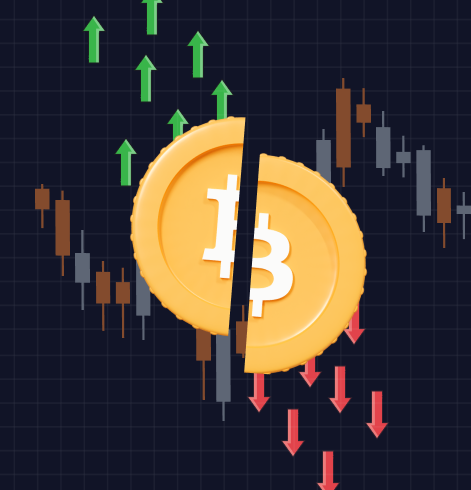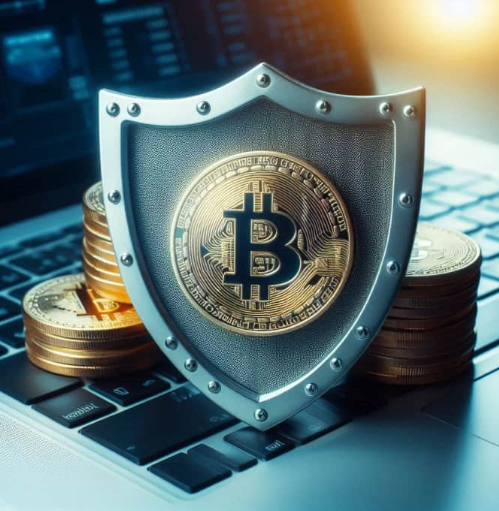Bitcoin’s halving events have become some of the most highly anticipated moments in the cryptocurrency world. Every four years, the reward for mining new blocks is cut in half, which reduces the rate at which new bitcoins enter circulation. This unique feature of the Bitcoin protocol is designed to control inflation and create scarcity, ultimately influencing both the market and mining activities. In this article, we’ll explore what Bitcoin halving is, its impact on the cryptocurrency landscape, and what we can expect from the next halving in 2024.
What Is Bitcoin Halving?
Bitcoin halving is a scheduled event where the reward for mining Bitcoin blocks is reduced by half. This occurs approximately every four years, or every 210,000 blocks, as part of Bitcoin’s deflationary model. The idea behind halving is to mimic the scarcity of precious metals like gold, which require more effort to extract over time. With a fixed supply of 21 million bitcoins, halving reduces the rate at which new coins are mined, ensuring that the final bitcoin won’t be mined until around the year 2140.
Each halving event generates significant buzz in the cryptocurrency market, as it both reduces the supply of new bitcoins and raises the stakes for miners. Additionally, halving events are often associated with price increases, driven by the reduced supply and continued demand for the cryptocurrency.
When Is the Next Bitcoin Halving?
The next Bitcoin halving is predicted to take place around April 19, 2024. The exact date is difficult to pinpoint due to fluctuations in the time it takes to mine each block. While the Bitcoin network aims for a block time of 10 minutes, variations in mining activity and network difficulty adjustments can cause this timeline to shift slightly. Despite this uncertainty, most estimates place the halving event in mid-April 2024.
A Look at Previous Bitcoin Halvings
Bitcoin has undergone several halving events, each of which has left a mark on both the cryptocurrency’s market value and mining landscape. Let’s take a look at the previous halvings:
- First Halving (2012): On November 28, 2012, the Bitcoin block reward dropped from 50 BTC to 25 BTC. This halving was a crucial test for Bitcoin, and in the months following it, the price of Bitcoin surged from $12 to nearly $1,000 by the end of the year.
- Second Halving (2016): On July 9, 2016, the block reward was reduced from 25 BTC to 12.5 BTC. This halving was followed by a significant price increase, with Bitcoin reaching around $2,500 by the end of 2017.
- Third Halving (2020): The most recent halving occurred on May 11, 2020, when the block reward dropped to 6.25 BTC. Although the immediate price reaction was somewhat muted, Bitcoin experienced a massive bull run in the following months, surpassing $60,000 in early 2021.
Bitcoin Price Predictions for 2024 Halving
While predicting the price of Bitcoin with certainty is challenging, historical trends suggest that Bitcoin’s price typically rises after halving events. Based on current trends, the following price estimates are possible:
- One month before the halving: Around $73,431, marking a 19.4% increase leading up to the event.
- One month after the halving: Approximately $75,465, reflecting a modest increase of 2.77%.
- End of 2024: The price could reach around $79,238, factoring in a conservative 5% increase from the month following the halving.
There are even more optimistic predictions, with some forecasting that Bitcoin could hit a new all-time high of $88,000 during 2024.
Impact of Bitcoin Halving on Mining
Bitcoin halving has a direct impact on the mining ecosystem. As the reward for mining blocks is halved, miners will receive only 3.125 BTC for each new block mined after April 2024. This reduction can affect mining operations in several ways:
- Reduced Mining Revenue: With half the reward, miners’ earnings will be significantly reduced, which may challenge the profitability of some operations, especially for those with less efficient hardware or higher electricity costs.
- Potential for Less Profitability: Mining becomes less profitable for those using outdated equipment or high-cost electricity. However, if Bitcoin’s price rises in response to the halving, it could offset some of the revenue loss.
- Increased Transaction Fees: As miners’ rewards decrease, they may turn to transaction fees to supplement their income. This could lead to higher fees for Bitcoin transactions, particularly during times of high network congestion.
- Hash Rate and Network Security: A decrease in miner participation could lead to a temporary dip in Bitcoin’s hash rate (the total computational power used for mining). However, the network adjusts the difficulty of mining approximately every two weeks, so any changes in hash rate should stabilize quickly.
Will Bitcoin’s Price Rise After the Halving?
It is difficult to say exactly how Bitcoin’s price will react following the April 2024 halving, but based on historical patterns, there are reasons to be optimistic:
- Price Increase Post-Halving: Each previous halving event has been followed by significant price increases, driven by reduced supply and growing demand. With fewer new bitcoins entering the market, the value of existing coins may rise, especially if demand remains strong.
- Decreased Selling Pressure: Miners who hold onto their coins rather than selling them could reduce selling pressure on the market, allowing the price to rise further.
- Speculative Buying: As the halving approaches, many investors may buy Bitcoin in anticipation of future price increases. This speculative buying behavior can contribute to upward price momentum.
Final Thoughts
Bitcoin’s upcoming halving in April 2024 is expected to be another pivotal moment in the cryptocurrency world. The event will not only impact the mining landscape but could also drive further interest in Bitcoin as an investment. While the immediate effect on the price is uncertain, past halving events suggest that Bitcoin may see significant growth in the months following the reduction in block rewards.
As always, the behavior of miners, investors, and the overall market will determine the true impact of the halving. One thing is for sure: the Bitcoin halving will continue to generate excitement and media coverage, making it an event worth watching closely in 2024.













